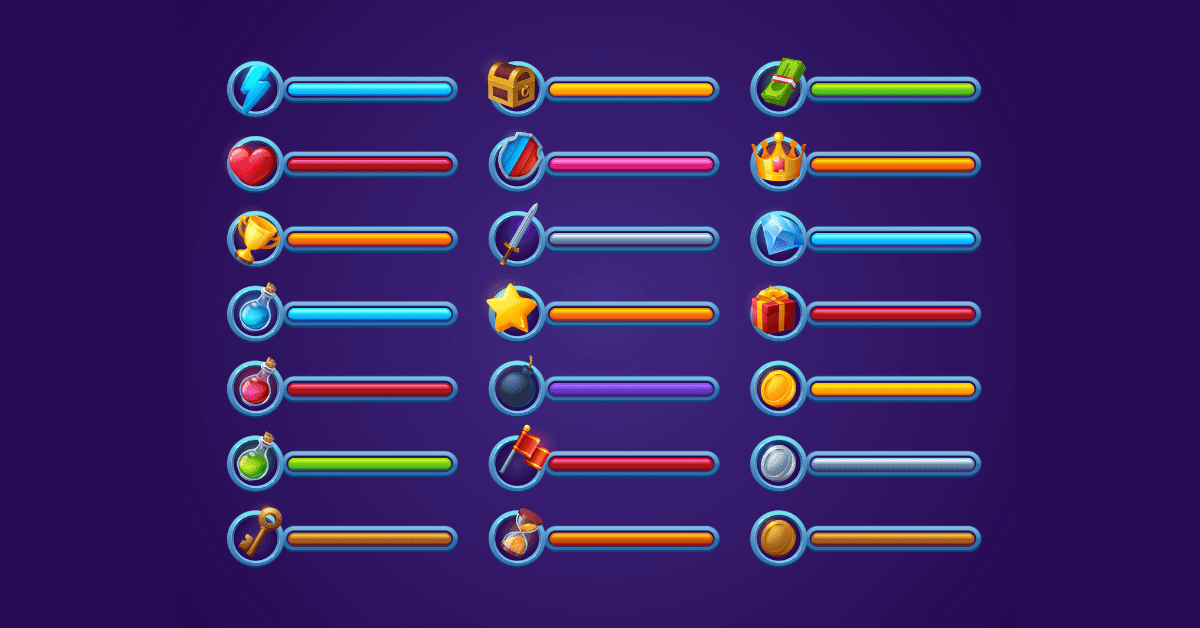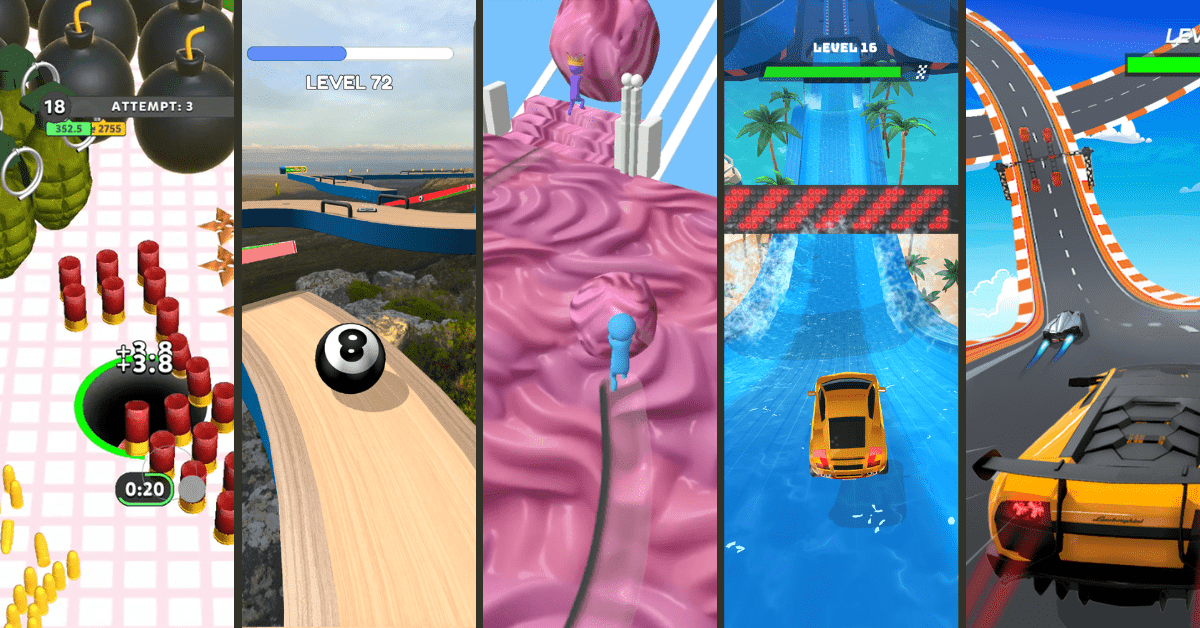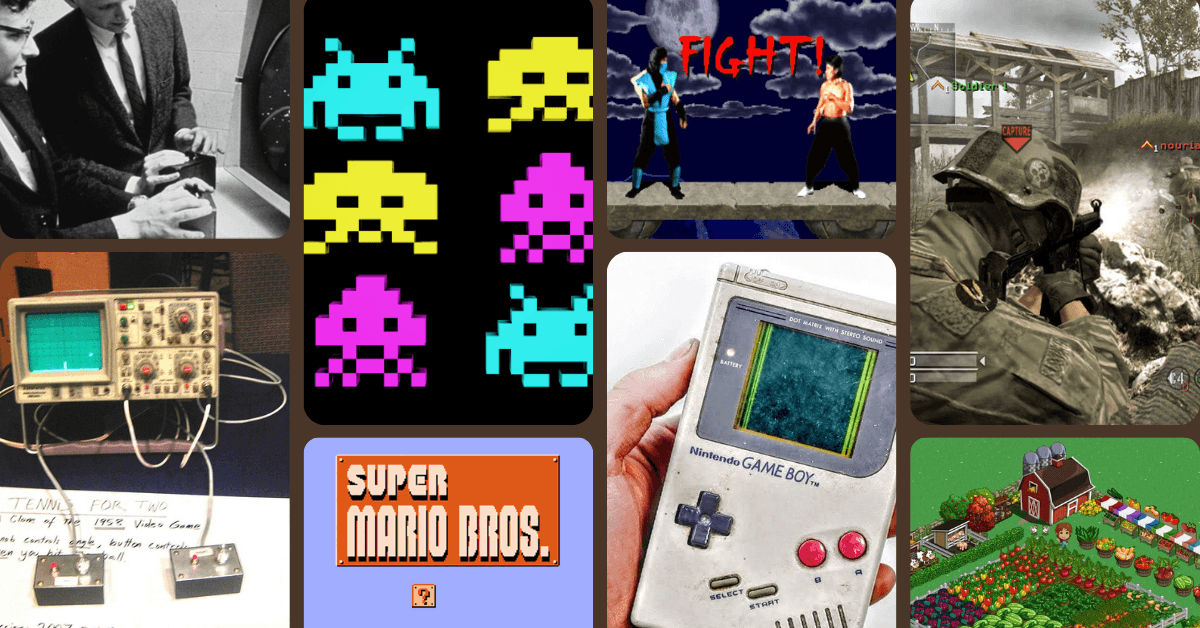In today’s competitive mobile gaming market, it’s not enough to simply entertain players—they need to be engaged, invested, and always striving for more.
The magic ingredient to keep them hooked?
Progression systems.
These powerful mechanisms drive players forward and create a compelling journey of growth and achievement. In this article, we’ll delve into what progression systems are, explore their various forms, and provide tips on integrating them into your own mobile games.
Why You Should Include Progression Systems in Your Game
Behind all successful mobile games are progression systems – the dynamic gears that shape the gaming experience and offer a sense of continuity. From the first tap on the screen, progression systems chart a trajectory of growth that draws players deeper into the game world.
Now, why should you give these systems the spotlight in your mobile game?
The answer lies in the trifecta of engagement, retention, and monetization.
A well-designed progression system stokes the player’s desire to advance and triggers an upward spiral of engagement. The promise of a more potent weapon, a more challenging level, or a higher leaderboard position keeps the game alive in the player’s mind, driving retention. Lastly, the alluring call of accelerated progress can pave the way for successful monetization strategies.
Each one of these forms a pivotal reason to embrace progression systems so let’s delve deeper into why progression systems are integral to your game’s design.

Boost Player Engagement
Progression systems are the gas that fuels the engine of player engagement. Consider your favorite mobile game. Is it the thrill of leveling up your character that keeps you coming back? Or is it the satisfaction of completing a difficult quest or mission? Maybe it’s the excitement of adding another rare item to your collection.
All these are progression elements that make the game more fun and engaging.
A well-thought-out progression system offers players a clear path forward, a tangible sense of achievement, and the motivation to keep playing. It dangles the carrot of future rewards, be it new abilities, powerful items, or unlocked game content, maintaining player interest over the long term.
Similarly, progression systems have a positive effect on retention.
Gradually Introduce Game Features and Meta-Layers
A mobile game rich in features and meta-layers can captivate a player’s interest for the long haul.
However, presenting all these elements at once can overwhelm players, especially new ones. This is where progression systems can play a pivotal role in gradually unveiling game features and meta-layers.
A thoughtfully designed progression system acts as a tour guide and leads players through the game’s features one step at a time.
By tying new features to progression milestones, you can ensure players have a solid grasp of existing mechanics before introducing them to something new. This not only prevents information overload but also maintains a consistent sense of novelty and discovery that keeps players engaged.
For instance, consider a game with a complex crafting system as one of its meta-layers.
Instead of presenting the player with all crafting options upfront, you might start with a few basic recipes. As the player progresses and levels up, they can unlock more advanced recipes. This provides a steady learning curve and a constant sense of achievement as players gradually master the system.
Moreover, gating certain features behind progression milestones can create anticipation and incentivize continued play. When players know that exciting new content or capabilities lie just around the corner, they’re likely to keep coming back to see what’s next.

Enhance Player Retention
Player retention is all about ensuring players come back to your game day after day.
This is where progression systems shine.
By introducing gradual progress and increasingly enticing rewards, players get a constant sense of advancement and achievement. They’re less likely to abandon a game in which they’ve invested time and effort to progress.
Think about a game where you’re building a city.
Each new building or upgrade you add takes time and resources, but it also brings you closer to your dream metropolis. The investment you’ve put into your city makes you want to come back, nurture it, and watch it grow.
That’s the power of progression systems in enhancing player retention.
Where things can get a bit tricky are mobile games where skill and progression are equally important.

The Dance of Skill and Progression
The duality of skill-based and progression-based gameplay is an intriguing aspect of mobile game design. Both elements can coexist harmoniously, but striking the right balance is essential.
In games where progression and skill are both important, it’s crucial that progression feels rewarding but doesn’t diminish the importance of player skill. You don’t want a situation where a novice player can quickly progress and outperform experienced players solely because they’ve invested more time or money.
Games like Fortnite showcase this balance excellently.
Although there’s a progression system in the form of a Battle Pass, unlocking new skins and emotes, the core gameplay is largely skill-based.
A player who just started has the same base abilities as someone who’s been playing for years. The progression system adds an extra layer of satisfaction and goals to achieve but doesn’t provide a competitive edge.
Remember, the aim here is to create an environment where skill and progression can coexist without stepping on each other’s toes.
A well-designed game should allow space for both the thrill of skill-based competition and the satisfaction of progression-based achievement. When done right, the interplay of these two factors can create a highly engaging and rewarding gameplay experience.

Facilitate Monetization
Last but not least, let’s talk about the money.
Progression systems can open up powerful opportunities for game monetization. By intertwining progression with in-app purchases, you can incentivize players to spend real-world money to accelerate their in-game progress.
Let’s take an example from Candy Crush Saga, one of the most successful freemium mobile games. When players get stuck at a difficult level, they’re given the option to buy power-ups or extra moves that can help them advance. This sense of being ‘so close’ to progressing can often convince players to make a purchase, turning your progression system into a revenue generator.
Remember, the key here is balance.
If players feel they can’t progress without spending money, they might get frustrated and leave. But when done right, integrating monetization into your progression system can significantly boost your game’s revenue.
However, integrating monetization into a progression system requires careful thought and precision.

Progression and Monetization: A Delicate Balance
Progression systems and monetization are a balancing act. You need to incentivize purchases without making players feel forced or penalized if they choose not to spend.
If players perceive that success in the game is primarily determined by the amount of money spent rather than skill or time investment, it can lead to frustration and ultimately, churn.
A common method is to offer time accelerators—premium purchases that allow players to progress faster but don’t provide exclusive access to content. This way, non-paying players can still access all areas of the game, it just takes them a little longer.
Consider the model used in Clash of Clans.
Players can speed up their building upgrades by purchasing gems. While this allows paying players to progress faster, non-paying players can still access the same content by patiently waiting for timers.
It’s crucial, however, to fine-tune the pacing.
If non-paying players feel the wait times are too long and progression is unattainable, it could lead to frustration. On the other hand, if paying players feel their investment doesn’t provide sufficient advantage, they might feel their purchase isn’t valuable.
Therefore, a delicate balance is key.
10 Types of Progression Systems in Mobile Games
Now that we’ve covered why you should add progression systems to your game, you’re probably wondering how many are there and which ones you should choose.
There’s no one-size-fits-all progression system.
Each game demands its unique blend of progression, core mechanics, meta layers, aesthetics, and narratives.
Let’s dive into some popular systems and their innovative implementations in hit mobile games.

Collection Systems
Collection systems, and particularly character collection, spark a hunt that spans across the game’s universe. Be it game characters in Genshin Impact or cars in CSR Racing, the thrill of discovery and collection drives player progression and engagement.
It’s no wonder this was the most popular meta-layer among top-grossing games in 2022. (SensorTower).
Leveling Up Characters
In mid-core genres like RPG and MOBA, character progression forms the backbone of the gaming experience.
As players delve deeper into the game, they level up their avatars, boosting abilities and unlocking new skills. Games like League of Legends: Wild Rift have elevated this progression system to an art form, where each character level-up is a strategic decision that influences the tides of battle.
However, more and more casual games are utilizing this progression system, which is a testament to how beneficial it is.

Quests and Missions
Quests and missions offer directed goals that guide player progression. Each completed task brings the player closer to a coveted reward.
Clash of Clans, for example, employs a robust quest system that keeps players engaged in its vibrant world, stringing them along a continuous line of progression.
Even though quests and missions are typically found in mid-core games, more and more casual games are incorporating them, but in a simplified way.
For example, the casual game Disney Magic Kingdoms incorporates a simplified quest system that provides players with purpose. Learn more about quests and other features in my in-depth Disney Magic Kingdoms analysis.

Building and Decoration
When it comes to games centered on building as a form of progression, EA’s SimCity BuildIt offers a quintessential example.
An adaptation of the classic SimCity PC game series, SimCity BuildIt has players taking charge of a small, budding city with dreams of transforming it into a bustling metropolis. Through its building-centric progression system, SimCity BuildIt encourages strategic planning, resource management, and creativity, allowing players to create unique cities that truly feel like their own.
Decoration is another progression system that can drive players forward and give them additional goals to strive for. A good example is Playrix with its games, Homescapes and Gardenscapes.

Storylines and Narratives
Some games weave progression into their narrative fabric and turn story advancement into a reward itself. For example, in Life is Strange, a popular interactive story game.
It anchors its progression in the unfolding narrative and rewards players with new story chapters as they progress. The key here is to come up with captivating narratives that will leave players wanting more.

Skill Trees
Skill trees, much like character leveling, are a common sight in RPGs and action games. They offer a branching pathway of abilities or perks that players can unlock over time.
Each choice in a skill tree can dramatically influence the gameplay style, adding depth and personalization to the player’s experience.
Take Shadow Fight for instance. It employs an intricate skill tree and allows players to customize their fighting style, which strengthens the sense of character ownership and progression.
Achievement Systems
Achievement systems provide micro-goals outside the game’s main narrative or mission structure. These could range from performing specific actions, reaching gameplay milestones, or playing for a certain duration.
A well-implemented achievement system like the one found in Angry Birds can offer extra challenges. That, in turn, entices players to push beyond their normal gameplay habits and adds an additional layer of depth to the overall progression.

Social Leaderboards
Finally, social leaderboards take progression systems to a communal level.
By ranking players based on their performance, leaderboards inject a competitive element into progression. Games like Clash Royale leverage leaderboards by rewarding top-ranking players with exclusive benefits. Another example is June’s Journey, an adventure game that focuses on competing with Facebook friends.
The desire to climb the leaderboard can serve as a strong motivator for progression, particularly for competitive players.
Guild or Team Progression
Multiplayer games often incorporate guild or team progression systems, which track the collective achievements of a group of players. This not only promotes social interaction but also motivates individual players to contribute to their team’s success.
An example is Clash of Kings, where joining alliances and participating in joint activities leads to team victories and progression.

Gear or Equipment Upgrade Systems
These systems involve players collecting and upgrading gear or equipment to improve their in-game abilities. Each upgrade marks a step forward in the player’s progression journey and provides a sense of accomplishment.
In the game PUBG Mobile, players continuously hunt for better weapons and gear to increase their odds of survival. That drives a constant cycle of engagement and progression.
Time-Gated Progression
Time-gated progression systems rely on real-world time to advance in the game. These systems often involve waiting periods for building structures, growing crops, or healing characters.
Despite the criticism of leading to pay-to-speed-up mechanics, when balanced, they can add a strategic element to progression. FarmVille is a classic example where growing crops and raising animals are tied to real-world time.
That keeps players coming back regularly to check their progress.
Examples of Progression Systems in Popular Games
Now, let’s take a detailed look at five popular mobile games across different genres. Each one incorporates progression systems in its own unique way and demonstrates the versatility and effectiveness of these systems.
Understanding the breadth and depth of these mechanics can be game-changing.

1. Striking Gold with Clash of Clans – Cumulative Upgrading System
In the bustling world of strategy games, Supercell’s Clash of Clans shines with its cumulative upgrading system.
It’s a straightforward, yet enticing approach: players collect resources to upgrade their base and army. Each upgrade offers exponential growth and fuels players’ sense of accomplishment. It also encourages further investment in time and resources.
The brilliance of this system lies in its cyclical nature – every upgrade fuels the desire for the next. This fosters sustained engagement, an essential trait in the highly competitive strategy game space.

2. From Newbie to Ace in Call of Duty: Mobile – Skill-Based Progression
Call of Duty: Mobile applies a skill-based progression system, a fitting choice for the adrenaline-pumped FPS genre. A player’s advancement hinges on their skills, with practice and experience translating into improved performance and higher ranks.
By aligning progression with skill, Call of Duty: Mobile creates a fulfilling gaming environment that promotes both competition and camaraderie. This system speaks to the human instinct for mastery, which is why it’s so effective for boosting player retention.
Learn more about its intricate features in my Call of Duty: Mobile dissection.

3. Character Evolution in Genshin Impact – Character-based System
MiHoYo’s action RPG, Genshin Impact, employs both character collection and character-leveling progression systems. Players traverse an expansive open world, battling enemies and completing quests to gain experience as well as collect and level up their diverse characters.
Character progression in this game directly impacts combat.
That injects a sense of depth and purpose into gameplay. It also encourages emotional investment and enhances player loyalty and long-term engagement.

4. Advancing in Clash Royale – Card Collection System
Clash Royale, another gem from Supercell, features a card collection progression system at the heart of its gameplay.
Winning battles earns players new cards and resources, which allows them to level up their existing card collection and unlock new arenas.
This progression system makes each battle rewarding and fuels players’ drive for continuous play. It also offers an element of surprise, as players uncover new, powerful cards, which keeps the gameplay fresh and exciting.

5. Raising the Stakes in Texas Holdem Poker: Pokerist – Ranking System
KamaGames’ Texas Holdem Poker: Pokerist employs a unique betting and ranking progression system.
Players compete in poker matches, win chips and climb leaderboards based on their poker prowess and strategic play.
It’s a testament to the effectiveness of competition-driven progression systems within the social casino genre.
Actionable Tips for Implementing Progression Systems in Mobile Games
With an array of progression systems at your disposal, the challenge lies in how you incorporate them into your mobile game.
Here are key tips to guide you.
Align Progression with Game Mechanics
Progression systems should serve as an extension of your game’s core mechanics. They should complement the gameplay, not clash with it.
For example, in a fighting game, a progression system might involve mastering new moves or upgrading character abilities, both of which tie directly into the core mechanic of combat.
Balance Challenge and Reward
A well-crafted progression system walks the fine line between challenge and reward.
If progress comes too easily, players won’t feel any real sense of achievement. If it’s too hard, they might give up out of frustration.
The key is to gradually increase the challenge as the player’s skills improve, ensuring they’re always on the brink of achieving something new and exciting.

Include Milestones
Milestones act as beacons of achievement and give players a clear view of how far they’ve come and where they’re headed.
These can be anything from reaching a new game level to acquiring a rare item. These markers of progress help players feel a sense of accomplishment and provide clear goals to strive for.
Incorporate Player Choice
Player agency is a potent motivator.
If players can shape their progression path, they’re likely to feel more invested in the game. This could mean choosing which skills to learn, which quests to undertake, or which equipment to upgrade.

Variety is the Spice
Mixing up different types of progression systems can keep your game fresh and engaging. For example, you could combine a leveling system with a quest system, giving players multiple ways to progress and multiple goals to work towards.
Use Progression to Teach
Your progression system can be a powerful teaching tool.
Early achievements or levels can serve as a game tutorial and help players learn the game mechanics in a low-pressure setting. As players progress, the challenges they face can gradually introduce more complex concepts.
Tailor to Player Types
Different players are motivated by different things. Some enjoy the thrill of competition, while others prefer exploration or social interaction.
Consider including different progression paths to cater to these different player types.

Reward Engagement
Your most dedicated players should feel their time and effort is well rewarded. Ensure your progression system provides ample rewards for those who invest the most time and money into your game.
Keep It Visible
Players should be able to easily see their progress.
This can be achieved through visual elements such as progress bars, achievement lists, or character stats. Visible progress can give players a sense of achievement and motivate them to keep playing.
Test and Iterate
Finally, remember that designing a progression system is an iterative process.
Test your system, gather player feedback, and be ready to make adjustments as necessary. What works in one game might not work in another, and even a well-designed system may need tweaking to hit that sweet spot of challenge and reward.
Progression Systems: A Summary
Having navigated the intricacies of progression systems, their potential in enhancing player engagement and retention is clear. Good progression systems become an integral part of the game and provide a roadmap for players to follow.
There’s no one-size-fits-all approach—each game requires a unique system, tailored to its mechanics and audience.
So whether you’re developing a new game or optimizing an existing one, remember to harness the power of progression systems. They could be the key to taking your player experience from good to unforgettable.







Comments